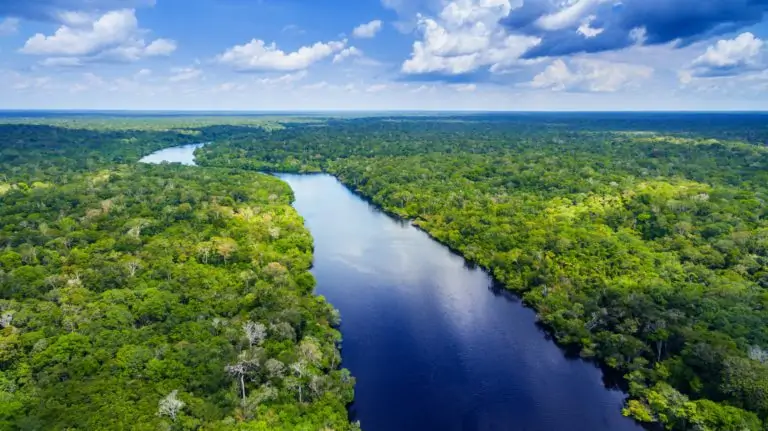Deforestation has caused incalculable damage to global ecosystems. An estimated 10 billion trees are cut down by human activity each year, irreparably damaging soil health, reducing biodiversity, and releasing large quantities of stored carbon dioxide into the atmosphere.
Multistrata agroforestry has been touted by many experts as a versatile and effective way of countering this issue and mitigating the impacts of deforestation.
This article will discuss what multistrata agroforestry is, the economic and environmental benefits it offers, and the key policies that will define its future.
What is multistrata agroforestry?
Multistrata agroforestry combines agriculture with forestry. It comprises multiple layers of trees, shrubs and crops on the same plot of land. Unlike simpler forms of agroforestry, which might integrate fewer species and layers, multistrata agroforestry incorporates a complex, vertically stratified architecture that more closely mimics the natural dynamics of a forest ecosystem.
The continuous vegetation cover in multistrata systems enriches soil fertility by integrating organic matter through leaf litter and root systems. Nutrients are constantly replenished and recycled, thereby generating a self-sustaining ecosystem that requires fewer external inputs to thrive.
These systems are highly effective in sequestering carbon. Research indicates that tropical multistrata agroforestry systems potentially feature the highest carbon sequestration rates of any food production system, surpassing more traditionally incentivised practices like conservation agriculture and managed grazing.
Additionally, multistrata agroforestry has proven to boost the resilience of agricultural systems to extreme weather events. By improving soil moisture retention and reducing erosion, these systems help to maintain soil quality and agricultural productivity in the face of climate volatility.
Economic and social perspectives
In addition to its environmental benefits, multistrata agroforestry offers many compelling economic benefits to farmers. Trees and shrubs can produce valuable byproducts such as timber, fruits, and medicinal plants, allowing farmers to diversify their income sources and limit the risks associated with adverse weather events, crop failures, or market fluctuations. Moreover, the net present values and returns to labour in agroforestry are significantly higher than alternative cropping systems, illustrating their economic viability.
Despite these significant benefits, the adoption of multistrata agroforestry is hindered by the amount of specialised knowledge needed to manage them effectively. Farmers require specialised training and resources to implement and optimise these complex ecosystems. Developing models and blueprints that capture both the ecological processes and economic outcomes of multistrata agroforestry systems is crucial for making these systems less formidable for farmers.
Policy implications for multistrata agroforestry
Due to the complexity of agroforestry and long-term nature of its results, policy support and incentives are key to ensuring widespread adoption. Governments need to implement policies that offer direct financial support (such as subsidies or grants), and provide comprehensive technical assistance to help farmers transition to these systems. Additionally, ensuring and incentivising market access for agroforestry products can make the practice more economically viable for farmers. The creation of supportive institutions is equally important. These institutions can provide the necessary infrastructure, resources and expertise to overcome barriers to adoption and enable farmers to transition to agroforestry systems. Some effective policies and initiatives include:
- Capacity building: Training programmes for farmers and extension workers are fundamental for promoting best practices in establishing and managing multistrata systems. These programmes can help farmers overcome knowledge gaps improve their understanding of ecological interactions and ultimately select the right species.
- Investment in research and development: Investing in research and pilot programmes to ascertain best practices for different agroforestry systems in a selected region helps develop a blueprint for future large-scale implementation. By tailoring to the area’s climate and soils, and fully considering the interplay of different plant species, research and pilot programmes provide clear insights into the most effective agroforestry systems for that territory.
- Regulatory framework: Establishing clear regulations that encourage and support agroforestry practices is essential. By developing regulations, subsidies and grants that incorporate with broader national and international policies, governments and policymakers can encourage wider adoption. Such a framework not only provides financial incentives for farmers but also helps ensure that agroforestry systems are integrated into overarching environmental and agricultural strategies. Furthermore, addressing land tenure issues is crucial to give farmers the security they need to invest in long-term projects such as agroforestry.
- Market development: Supporting the development of markets for agroforestry products, including certification schemes and marketing campaigns to promote locally produced goods can enhance awareness, increase demand, and encourage farmers to adopt or scale up agroforestry practices.
- Monitoring and evaluation: Creating mechanisms for the ongoing monitoring and evaluation of agroforestry projects can help assess their impact and identify challenges. Additionally, these mechanisms add a layer of accountability and transparency. They enable stakeholders to make more informed decisions and adopt strategies that maximize environmental, economic, and social benefits.
- Collaborative forums: Establishing forums and platforms for collaboration among various stakeholders such as farmers, traders, private companies, academia and research institutes, multilateral organisations, international certification bodies, and political entities can help stimulate innovation, and coordinate efforts across different sectors. These forums provide an avenue for aligning goals, addressing challenges, and creating synergies that drive the successful adoption of agroforestry systems. Through ongoing dialogue and partnerships, stakeholders can co-create solutions that are context-specific, inclusive, and capable of advancing both local and global sustainability objectives.
Ireland as a case study:
In recent years, the Irish government has introduced several conducive policies to support the adoption of agroforestry systems, and they have emphasised the role of agroforestry in achieving Ireland’s environmental goals, particularly in carbon sequestration and biodiversity enhancement.
The Department of Agriculture, Food and the Marine (DAFM) offers grants for the establishment and maintenance of agroforestry systems that improve sustainability and enhance rural livelihoods. Under the Forestry Programme, the DAFM covers the cost of establishing the forest, and all payments and earnings are income tax free.
However, uptake has been slow due to various challenges, including lack of awareness and perceived economic risks. Through strategic policy supports, education, and research, Ireland can leverage agroforestry to meet its national and European environmental targets while promoting rural development and economic diversification.
The future of multistrata agroforestry
With the right policies, resources and support, multistrata agroforestry systems can have a profoundly positive impact on biodiversity, climate change, and long-term sustainability goals.
At Farrelly Mitchell, our food and agribusiness experts passionately support clients looking to implement more ethical, sustainable, and responsible agricultural practices. We hold deep insights into industry best practices and relevant policies, allowing clients to implement sustainable practices such as agroforestry, regenerative agriculture, and clean energy systems efficiently and cost-effectively. Contact our experts today to find out more about our services and position your farm or agribusiness for long-term sustainable growth.














